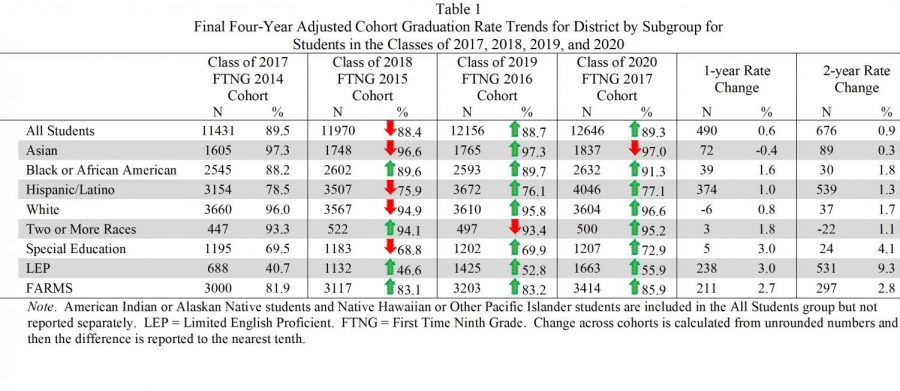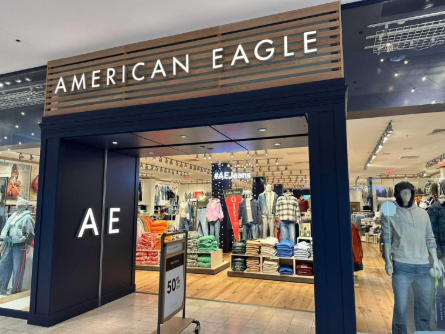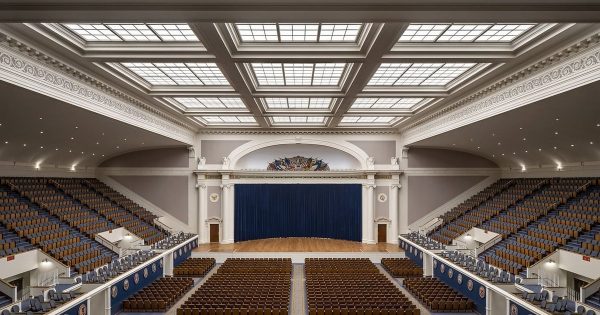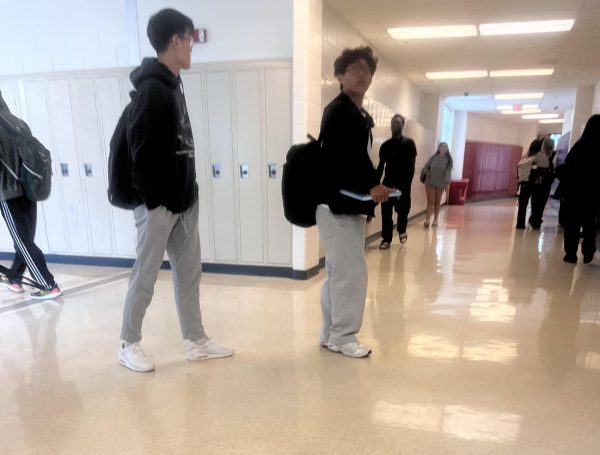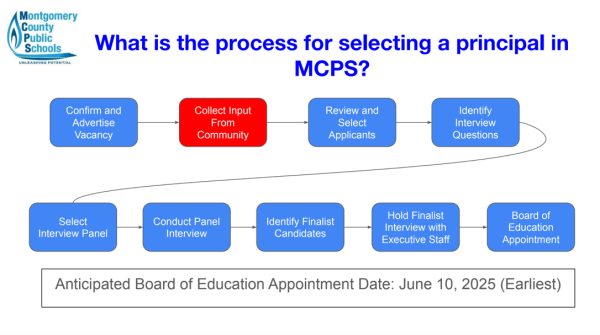MCPS four-year graduation rate increases; Wootton takes place as second highest in county
MCPS graduation rate trends for each student group from the class of 2017 to this year.
Despite the challenges faced by students and staff members alike in the COVID-19 pandemic, MCPS’ four-year graduation rate has increased significantly to about 89.3%, according to data released by the Maryland State Department of Education. This is 0.6 percentage points above the previous MCPS rate, and higher than the state average of 86.8%.
This increase occurred in all student groups outside of Asian students. Hispanic and Latino students experienced a 1% increase and African American students experienced a 1.6% increase, with 2021’s percentages showing 77.1 and 91.3 as the total for each group respectively.
The graduation rate for Limited English Proficiency (LEP) students also increased significantly, with a rise of 3% since the previous year. This marks a 9% increase in the graduation rate for LEP students since 2018, as 531 more LEP students graduated since that year. Special education students had a 4.1% increase over the last four years.
“We are very pleased to see our graduation rate on the rise. Our students have worked so hard in the face of an unprecedented year. They have been supported by their families, the greater Montgomery County community and by MCPS staff, who have gone above and beyond to provide for their academic and social-emotional needs. We are making tremendous progress in closing gaps, but there is always more work to do,” Superintendent Jack Smith said.
This school’s graduation rate is as of now the second highest in the county, at 97.7%, just below Poolesville’s 99.3%, experiencing a consecutive increase across two years.
According to a US News report from Apr. 22, 2020, the nation’s graduation rate was at about 88%, putting it at 1.3% below MCPS’ rate and 9.7% below our school’s.
For a long time, the graduation rate stayed at about 85%, then increases began showing nationwide, an increase that has not halted despite the COVID-19 pandemic.
According to a 2017 analysis by Jay Mathews of the Washington post, these gains are irrelevant. “As impressive as these numbers seem, there is no research indicating they reveal any learning gains in our high schools. Because of an accelerating use of a shortcut to graduation called credit recovery — used by 88 percent of school districts — most if not all of this much-publicized high school improvement might be an illusion,” Matthews said.
In contrast, Douglas N. Harris of Brookings states otherwise. “NCLB increased high school graduation rates. We find that the rise in high school graduation really was very likely caused by accountability. States with more districts below the statewide NCLB-induced graduation thresholds saw larger increases in graduation. Moreover, districts that were below the threshold saw the largest graduation increases, within their respective states. Accountability (slightly) increased other forms of strategic behavior, but this cannot explain the overall graduation rate increase,” Harris said, concluding that “While we need to work to improve the data, we can also swing too far in the other direction—and too-easily dismiss the measures we have now. But, even in the worst-case scenarios laid out here, the evidence suggests that the accountability helped increase the national high school graduation rate—and produced some real and important knowledge and skills for students. Given the value of high school degrees generally, this is a great accomplishment.”
Your donation will support the student journalists of Thomas S. Wootton High School. Your contribution will allow us to purchase equipment and cover our annual website hosting costs.
Elliot Wang is a 2021 graduate.


